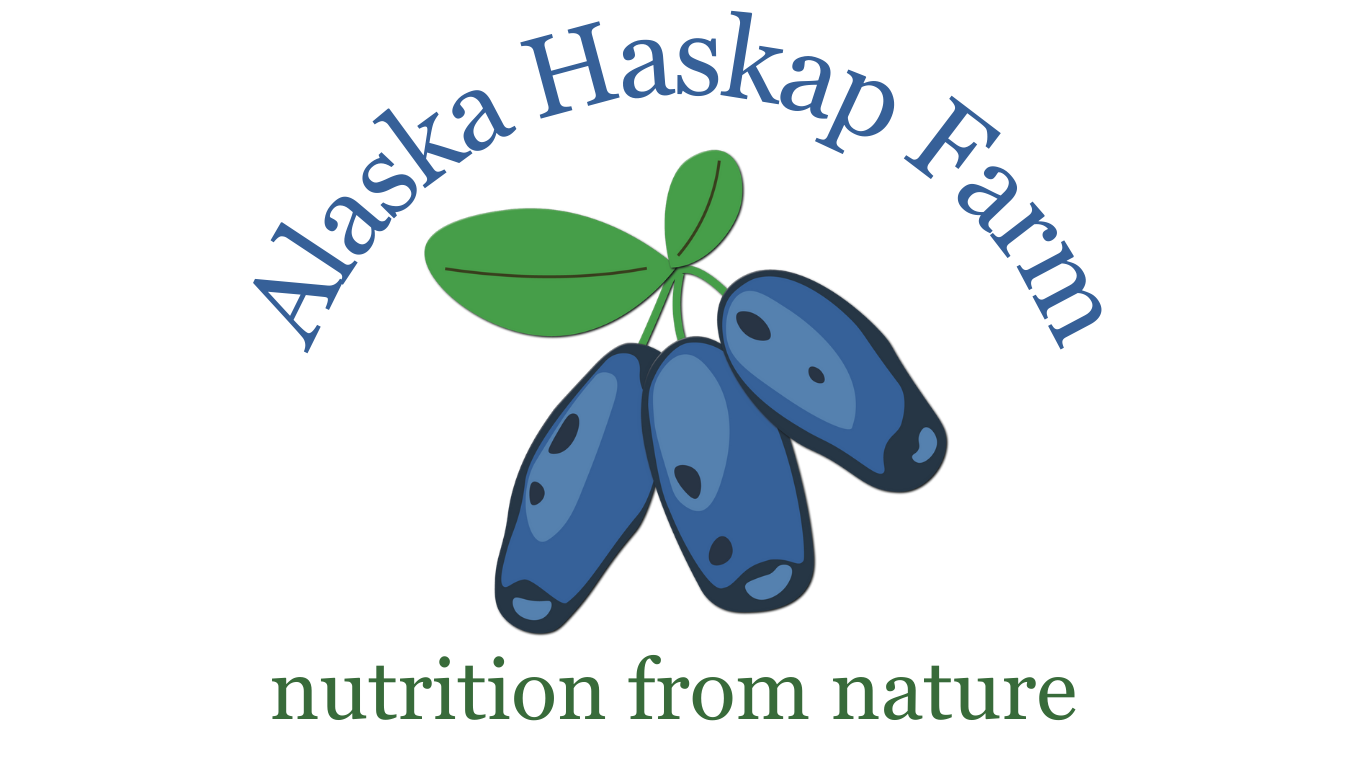
Frequently Asked Questions
What is the name again?
Haskap. Pronounced: Has-cap. Maybe you’ve heard it called a Honeyberry? Edible Blue Honeysuckle? Truth is, this super berry boasts many names, often tied to its place of origin or a specific marketing goal. Scientifically, it is known as Lonicera caerulea. We like to use Haskap in honor of it’s history.
Need more science about the name? The distinction between these names lies in the specific subspecies of Lonicera caerulea they represent. 'Haskap' is specifically used for Lonicera caerulea subspecies emphylocalyx, particularly native to the northern regions of Eurasia and North America. Meanwhile, 'Honeyberry' typically encompasses Lonicera caerulea subspecies kamtshatica, edulis, boczkarnikovae, and occasionally altaica.
What do they taste like?
Haskaps taste uniquely tangy and sweet, like a mouthful of different berries at the same time. It is hard to describe a ‘new’ flavor… The beauty of the Haskap powder is that unlike fresh fruit which can vary tremendously in flavour and ripeness by the time we get it home, each species of Haskap berry is harvested and freeze dried at their peak for both flavour and nutritional properties. They are then blended together to create a uniquely consistent color and flavor.
Are they good for us?
The Haskap Berry is arguably one of the most nutritious and tasty berries in the world and is currently gaining recognition for its potential as the next significant development in nutritional wellness. Our Science page has more detailed nutritional information and links to published papers.
Why make them into powder?
Fresh Haskaps have a short shelf life, making fresh berries only available to local markets for very little time. These powdered Haskap berries are harvested at their peak, frozen immediately and then gently freeze dried for shelf stability. Gentle freeze drying preserves the nutritional value, incredible taste and beautiful color. Chefs love the flavor consistency most.
How do I use the Powder?
As a powder, the options for use in the kitchen are limitless. Not just for the nutrients & flavor either, the color is gorgeous and can be used as a natural food dye. Smoothies, yogurt, cereal, sauces, dressings, sprizers… Get creative, your new favorite ingredient is here!
What is a Serving Size?
One Serving = One Teaspoon Powder = One Handful of Berries = Around 30+ Berries
What is in a pouch of Haskap powder?
There are approximately 800 freeze dried Haskap berries per 300g/3.5oz pouch, and nothing else. (Contains a necessary food safe moisture control packet)
How do they compare to a Blueberry?
Antioxidants x 3. Anthocyanins x 4. Vit C x 4+. Flavor x 5
Blue Skin + Crimson Flesh = Deep Red-Purple = High Concentration of Micro-Nutrients
Why haven’t I heard of Haskap?
In order for people to know about, consume or buy a ‘new’ food, we have to have access and exposure to that food. If you live in the United States, chances are the Haskap berry is a stranger to you and unfortunately, your taste buds. One reason is due to the Haskaps refusal to grow in warm climates. These plants need the cold winter dormancy and a long spring thaw to live it’s best life (known as chilling hours- Haskap typically need 1200 chilling hours). The majority of food farming in America is done in southern, warmer climates with lots of sunlight and high temperatures, meaning there isn’t any incentive to grow Haskaps in the more familiar growing regions.
Though the warmer states may not know the Haskap berry, there are many US farmers, fruit growers, and home gardeners that do. Haskaps are being grown from Oregon and Washington east through the Dakotas, Minnesota, Wisconsin all the way through to Maine. Cross the border into Canada and Haskaps are now one of the most grown crops across the entire country.
Note: This is the precise reason we offer Haskap Berry Powder available year round by mail. This freeze dried powder is efficiently packaged, ships anywhere, and has a long shelf life. The versatility makes it a great addition to your wellness and culinary journey.
Where do they grow?
Haskap-Lonicera caerulea is a circumpolar species native to the northern boreal forests and can be found wild in mountains as well as marshlands. Zones 1-4. These regions experience frigid winters and temperate summers, creating the ideal environment for these super berries to flourish. The resilient Haskap plant can withstand extreme temperatures, down to nearly nearly -50ºF. The nutritional richness of Haskap berries can be linked to their ability to not just survive, but thrive in these harsh, cold climates.
Soon, the Haskap will no longer be considered a ‘new berry’ and instead be in kitchens throughout the world in one form or another, we hope you’ll join us by bringing Haskap berries into your kitchen too.
Photo: Homer, Alaska

